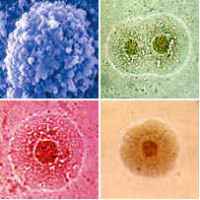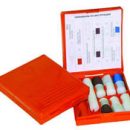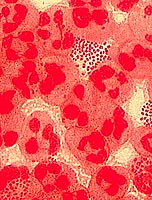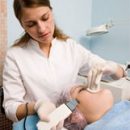The problem is that ureaplasma and mycoplasma are often found in the analyzes, they are treated with various means, but after that, for some reason they are detected again. This article will help you understand why.
Content
Ureaplasma and mycoplasma – This is one of the varieties of bacteria. In scientific literature among gynecologists, urologists and microbiologists, there was also a discussion on the importance of detection of ureaplasm in the vagina. Today, this discussion is largely completed. The position of modern medical science regarding ureaplasm and mycoplasmas can be expressed as follows:
 Ureaplasma and mycoplasma detected in the vagina belong to the group of conditionally pathogenic microbes. This means that most people do not cause diseases, and «Treat ureaplasm» They are not needed. Some scientists suggest that with a reduced immunite, they can weight the course of disease caused by others – pathogenic microbes, but there is no exact evidence to this. The detection of mycoplasmas and ureaplasm in the vagina is rarely associated with the risk of infertility development, non-banking of pregnancy and other complications.
Ureaplasma and mycoplasma detected in the vagina belong to the group of conditionally pathogenic microbes. This means that most people do not cause diseases, and «Treat ureaplasm» They are not needed. Some scientists suggest that with a reduced immunite, they can weight the course of disease caused by others – pathogenic microbes, but there is no exact evidence to this. The detection of mycoplasmas and ureaplasm in the vagina is rarely associated with the risk of infertility development, non-banking of pregnancy and other complications.
- Ureaplasma detect in the vagina more than 30% of healthy women. Therefore, many scientists even consider them part of the normal vaginal microflora. Such organisms are called saprophytes or commens – the benefits of them maybe a bit, but also harm.
- Ureaplasma and mycoplasma almost always meet with others – Suggest – microbes, among whom chlamydia is most often found. Most ureaplasm and mycoplasm are treatable by the same antibiotics as chlamydia, however, ureaplasma is sensitive to one species of antibiotics, and mycoplasms – To others. About 10% Ureaplasm resistant to tetracycline drugs, doxycycline.
Why look for ureaplasm and mycoplasma
If nothing bothers you, look for ureaplasma.
If there are signs of inflammation, then ureaplasm and mycoplasma are considered the perpetrators to last if they did not find anything «worse».
Detection of ureaplasma – This is not a diagnosis of the disease. Find ureaplasma or mycoplasm with DNA diagnostics (PCR) is very easy, but to put an accurate diagnosis of ureaplasmosis or mycoplasmosis – No. If you think about how much one PCR is worth and appointed on the basis of one positive result «treatment», It is not difficult to guess that if someone is profitable, then definitely not you. Treat you, and not your tests.
A few years ago, the method of determining biovars Ureaplasm (Parvo and «960», Now these are separate Ureaplasma Urealiticum and Ureaplasma Parvo). Assumed that some bifters cause ureaplasmosis, and others – No (T.E. that only Vreptism urealitikum is true pathogenic). Time showed the erroneousness of this assumption. PCR without additional research can not confirm the diagnosis of ureaplasmosis or mycoplasmosis.
If you have detected ureaplasm, and there are signs of inflammation, do not rush to take antibiotics. First you need to make sure how these microbes are guilty of inflammation.
Real mycoplasmosis and ureaplasmosis
One of the options when treating ureaplasmosis is worth, is the detection of ureaplasm with chlamydia if there are signs of the inflammatory process. Manifestations of this process in the urinary ways, in general, the same and independent of the causative agent. Successful treatment of chlamydia often eliminates you and from ureaplasm.
However, in some cases, ureaplasma or mycoplasma is found as the only pathogens when inflammation. In such cases, for the diagnosis of ureaplasmosis and mycoplasmosis may be grounds. Treatment of mycoplasmosis and ureaplasmosis can be shown:
- With the risk of pregnancy complications.
- When infertility, if no other causes are installed.
- With a planned operation or unsafe procedure on the genitals (so as not to put the microbes in the wound).
- If there are signs of inflammation confirmed by accurate diagnostics
Accurate diagnosis of ureaplasmosis
 The classic method for diagnosing ureaplasmosis and mycoplasmosis (Golden Standard) is seeding material from the urinary tract to a special environment with the release of the pathogen. It is important to count microbes. The data of bacteriological research should indicate that the content, the so-called titer ureaplasm is 10,000 per 1 ml, and at the same time the titer of other identified bacteria should be less than 10 times.
The classic method for diagnosing ureaplasmosis and mycoplasmosis (Golden Standard) is seeding material from the urinary tract to a special environment with the release of the pathogen. It is important to count microbes. The data of bacteriological research should indicate that the content, the so-called titer ureaplasm is 10,000 per 1 ml, and at the same time the titer of other identified bacteria should be less than 10 times.
In modern clinics, the most complete variant of the bacteriological diagnosis of ureaplasmosis and mycoplasmosis is performed. There are produced:
- Sowing on a special environment.
- Cultivation and excretizer.
- His identification to type (Mycoplasma Hominis, M. Genitalium, U. urealiticum).
- Quantitative accounting with the determination of the capitate titer.
- Determination of sensitivity to antibiotics on the Bio Merieux test system (France).
In the diagnosis of a number of forms of mycoplasmosis and ureaplazmosis, the definition of antibodies to antigens of different types of mycoplasmas and ureaplasm is used. With it, it can be seen how your body reacts to these microbes. If there is a reaction, then, most likely, they are guilty in inflammation. This test is also available in modern clinics.
What to do if they found ureaplasm or mycoplasma
What to do if you have a random or disadvantaged ureaplasma or mycoplasma by PCR? It depends on whether you have complaints and the manifestations of the inflammatory process now.
If some phenomena are bothering you – It should be understood in their actual reason, which, in some cases, may be ureaplamen / mycoplasmosis. Treat the disease, the exact diagnosis of which will be installed. Treatment errors can be avoided by learning how dedicated microbes can be resistant to.
If there are no manifestations and complaints, and you are not in the risk group (see. above), then there is no reason for concern and it is not necessary to be treated.
From modern positions, ureaplasmosis is not considered a venereal disease, so «Check out» specially not needed.









